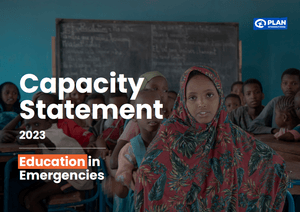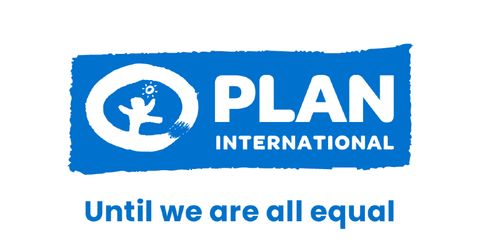Education in emergencies capacity statement 2023
This capacity statement explains Plan International's approach to education in emergencies and impact in this area is 2023.

Context
According to Education Cannot Wait’s Global Estimates Study released in June 2023, the education of 224 million children has been severely disrupted by conflict, climate change and other disasters. Of these children, only 25 million children (50% girls) are achieving minimum proficiencies in both reading or math. 127 million crisis-affected children (48% girls) are attending school but not achieving minimum proficiency levels, and a staggering 72 million school-aged children (53% girls) are out of school.
Although education is now recognised as a critical sector in humanitarian response and a key element of development cooperation in crisis settings, only 30% of global humanitarian education requirements are currently funded.
With needs skyrocketing, the gap is widening. Globally, funding asks for education within humanitarian appeals nearly tripled from US$ 1.1 billion in 2019 to almost US$ 3 billion by the end of 2022.
This highlights the critical need for inclusive quality education programming in humanitarian settings and for strengthened advocacy efforts that raise the profile of education in emergencies, call for increased political support and ensure increased funding to address the gap. As a leading organisation in education in emergencies, Plan International has a critical role to play in programming and influencing.
Our approach
Education in emergencies is the provision of safe, inclusive, quality educational opportunities that meet the physical protection, psychosocial, developmental and cognitive needs of children, adolescents and youth in all their diversity who have been affected by disasters. It provides immediate lifesaving and lifesustaining support from early childhood into adulthood. Following a disaster, we support safe return to learning for the most marginalised and out of school children, adolescents and youth including adolescent girls, refugees and forcibly displaced populations and those living with disabilities. We support access to and provision of gender responsive and inclusive alternative and non-formal education, as well as ensuring learning continuity in formal pre-primary, primary and secondary education during a crisis. Through teacher professional development, we support the psychosocial wellbeing and practical needs of teachers and other education personnel.
We work with all stakeholders before, during and after disasters, through preparedness, response and recovery programming, following the INEE minimum standards and other key humanitarian standards. We ensure that our programming is gender responsive and inclusive and meets all Core Humanitarian Standard commitments of quality and accountability. We work together with local actors , including youth led organisations, those focused on girls’ and young women’s rights and other representative organisations. We work together with local education authorities to strengthen effective support and supervision for teachers. We apply a crisis and conflict sensitive approach, ensuring community participation in the design and implementation of responses, and work to strengthen resilient and climate smart education systems.
Download the capacity statement
Education in emergencies capacity statement 2023
2 mb
Categories: Education, Emergencies
